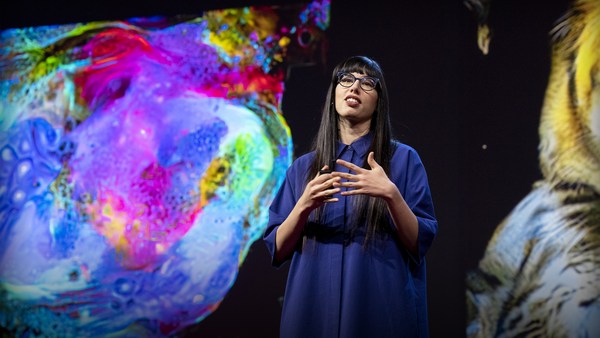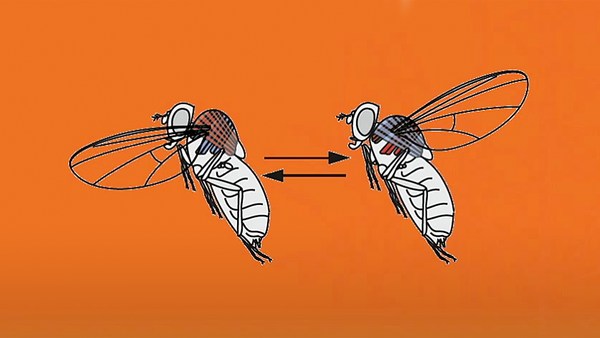Creating intelligence on a computer. This has been the Holy Grail for artificial intelligence for quite some time. But how do we get there?
So we view ourselves as highly intelligent beings. So it's logical to study our own brains, the substrate of our cognition, for creating artificial intelligence. Imagine if we could replicate how our own brains work on a computer. But now consider the journey that would be required.
The human brain contains 86 billion neurons. Each is constantly communicating with thousands of others, and each has individual characteristics of its own. Capturing the human brain on a computer may simply be too big and too complex a problem to tackle with the technology and the knowledge that we have today.
I believe that we can capture a brain on a computer, but we have to start smaller. Much smaller.
These insects have three of the most fascinating brains in the world to me. While they do not possess human-level intelligence, each is remarkable at a particular task. Think of them as highly trained specialists.
African dung beetles are really good at rolling large balls in straight lines.
(Laughter)
Now, if you've ever made a snowman, you know that rolling a large ball is not easy. Now picture trying to make that snowman when the ball of snow is as big as you are and you're standing on your head.
(Laughter)
Sahara desert ants are navigation specialists. They might have to wander a considerable distance to forage for food. But once they do find sustenance, they know how to calculate the straightest path home.
And the dragonfly is a hunting specialist. In the wild, dragonflies capture approximately 95 percent of the prey they choose to go after.
These insects are so good at their specialties that neuroscientists such as myself study them as model systems to understand how animal nervous systems solve particular problems. And in my own research, I study brains to bring these solutions, the best that biology has to offer, to computers.
So consider the dragonfly brain. It has only on the order of one million neurons. Now, it's still not easy to unravel a circuit of even one million neurons. But given the choice between trying to tease apart the one-million-neuron brain versus the 86-billion-neuron brain, which would you choose to try first?
(Laughter)
When studying these smaller insect brains, the immediate goal is not human intelligence. We study these brains for what the insects do well. And in the case of the dragonfly, that's interception. So when dragonflies are hunting, they do more than just fly straight at the prey. They fly in such a way that they will intercept it. They aim for where the prey is going to be. Much like a soccer player, running to intercept a pass. To do this correctly, dragonflies need to perform what is known as a coordinate transformation, going from the eye’s frame of reference, or what the dragonfly sees, to the body's frame of reference, or how the dragonfly needs to turn its body to intercept.
Coordinate transformations are a basic calculation that animals need to perform to interact with the world. We do them instinctively every time we reach for something. When I reach for an object straight in front of me, my arm takes a very different trajectory than if I turn my head, look at that same object when it is off to one side and reach for it there. In both cases, my eyes see the same image of that object, but my brain is sending my arm on a very different trajectory based on the position of my neck.
And dragonflies are fast. This means they calculate fast. The latency, or the time it takes for a dragonfly to respond once it sees the prey turn, is about 50 milliseconds. This latency is remarkable. For one thing, it's only half the time of a human eye blink. But for another thing, it suggests that dragonflies capture how to intercept in only relatively or surprisingly few computational steps.
So in the brain, a computational step is a single neuron or a layer of neurons working in parallel. It takes a single neuron about 10 milliseconds to add up all its inputs and respond. The 50-millisecond response time means that once the dragonfly sees its prey turn, there's only time for maybe four of these computational steps or four layers of neurons, working in sequence, one after the other, to calculate how the dragonfly needs to turn. In other words, if I want to study how the dragonfly does coordinate transformations, the neural circuit that I need to understand, the neural circuit that I need to study, can have at most four layers of neurons. Each layer may have many neurons, but this is a small neural circuit. Small enough that we can identify it and study it with the tools that are available today.
And this is what I'm trying to do. I have built a model of what I believe is the neural circuit that calculates how the dragonfly should turn. And here is the cool result. In the model, dragonflies do coordinate transformations in only one computational step, one layer of neurons. This is something we can test and understand.
In a computer simulation, I can predict the activities of individual neurons while the dragonfly is hunting. For example, here I am predicting the action potentials, or the spikes, that are fired by one of these neurons when the dragonfly sees the prey move. To test the model, my collaborators and I are now comparing these predicted neural responses with responses of neurons recorded in living dragonfly brains. These are ongoing experiments in which we put living dragonflies in virtual reality.
(Laughter)
Now, it's not practical to put VR goggles on a dragonfly. So instead, we show movies of moving targets to the dragonfly, while an electrode records activity patterns of individual neurons in the brain. Yeah, he likes the movies. If the responses that we record in the brain match those predicted by the model, we will have identified which neurons are responsible for coordinate transformations. The next step will be to understand the specifics of how these neurons work together to do the calculation.
But this is how we begin to understand how brains do basic or primitive calculations. Calculations that I regard as building blocks for more complex functions, not only for interception but also for cognition.
The way that these neurons compute may be different from anything that exists on a computer today. And the goal of this work is to do more than just write code that replicates the activity patterns of neurons. We aim to build a computer chip that not only does the same things as biological brains but does them in the same way as biological brains. This could lead to drones driven by computers the same size of the dragonfly's brain that captures some targets and avoid others. Personally, I'm hoping for a small army of these to defend my backyard from mosquitoes in the summer.
(Laughter)
The GPS on your phone could be replaced by a new navigation device based on dung beetles or ants that could guide you to the straight or the easy path home.
And what would the power requirements of these devices be like? As small as it is -- Or, sorry -- as large as it is, the human brain is estimated to have the same power requirements as a 20-watt light bulb. Imagine if all brain-inspired computers had the same extremely low-power requirements. Your smartphone or your smartwatch probably needs charging every day. Your new brain-inspired device might only need charging every few months, or maybe even every few years.
The famous physicist, Richard Feynman, once said, "What I cannot create, I do not understand." What I see in insect nervous systems is an opportunity to understand brains through the creation of computers that work as brains do. And creation of these computers will not just be for knowledge. There's potential for real impact on your devices, your vehicles, maybe even artificial intelligences.
So next time you see an insect, consider that these tiny brains can lead to remarkable computers. And think of the potential that they offer us for the future.
Thank you.
(Applause)





